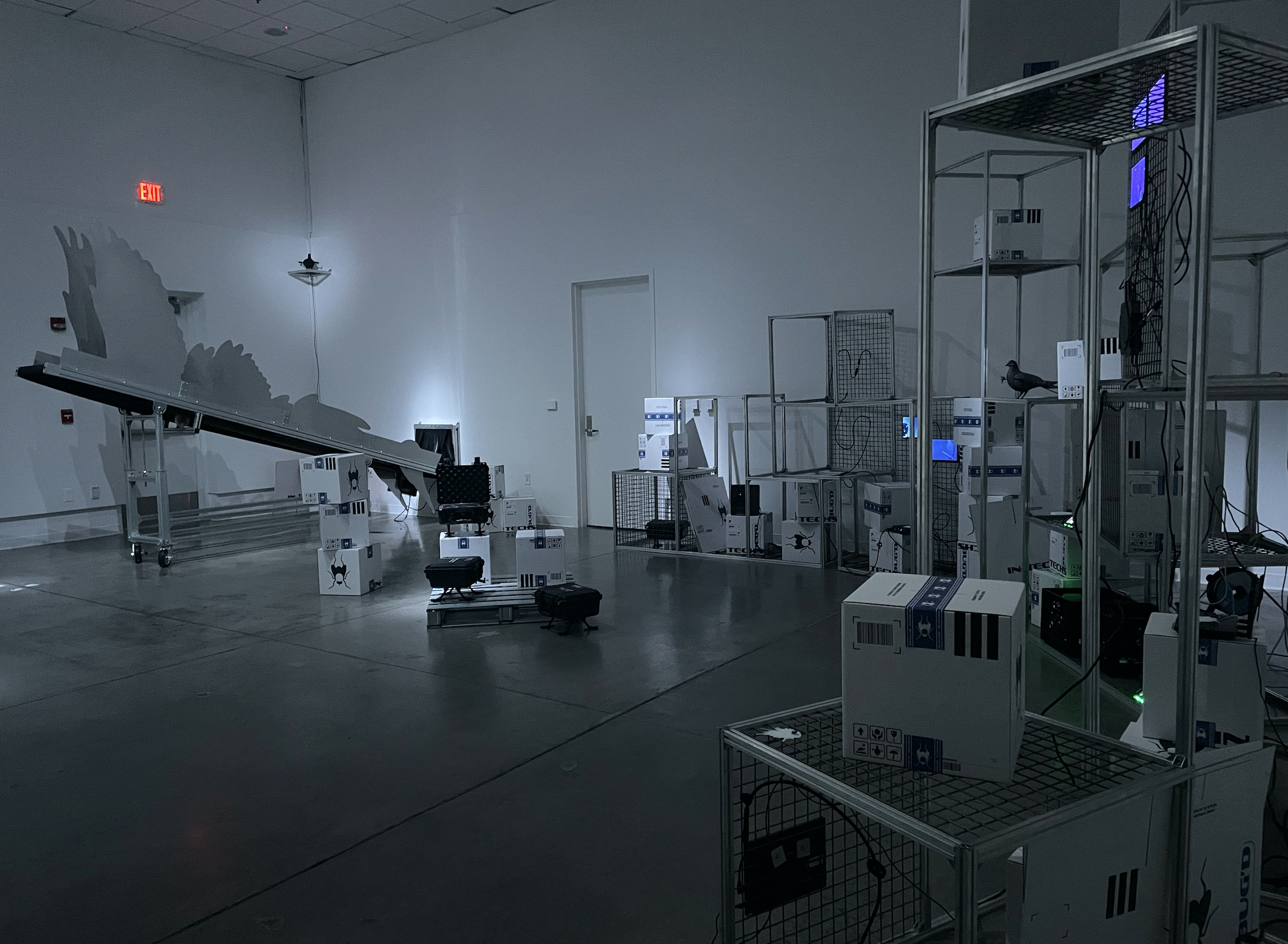IRVINE, California — In 1970, University of California, Davis MFA graduate Bruce Nauman staged “Live-Taped Video Corridor” at Nicholas Wilder Gallery, a block off the Sunset Strip in Los Angeles. The work placed two televisions at the end of a narrow corridor. One showed an empty view of the hallway, the other a “livestream” of the viewer proceeding toward the screens. The watershed installation centered the viewer’s experience over the artist’s gesture, countering the popular appeal of Abstract Expressionism at the time. AbEx descendants, though, continue to dominate their conceptual peers, both at auction and in most galleries. Luckily, public university MFA programs like Nauman’s are not subject to quite the same market pressures. At the University of California, Irvine, a school with its own legacy of storied conceptualists, three recent MFA graduates staged immersive exhibitions across the school’s Orange County campus, each with incisive, self-aware touches that challenge histories of gallery and institutional display.
Devin Wilson’s The Pigeon Has Landed updates Nauman’s early video works for the Amazon era, transforming a dimly lit gallery into a creepy, high-tech warehouse serving a futuristic corporate entity. Hidden cameras project the viewer’s image onto small TV screens, boxes printed with an unfamiliar logo fill the corners, and a conveyer belt rotates off one wall, delivering nothing but, well, white, splattered bird shit. Here, the art institution is little more than a drop-shipper, an idea Wilson furthers with elaborate, confusing exhibition texts — pigeons, apparently, are “the symbolic nexus of capitalism” — that riff off of jargon-heavy press releases and exhibition texts.
Liz Stringer’s sculpture series The Showings offers another take on the art gallery, employing large, near-architectural forms to transform her exhibition space into a post-apocalyptic, post-human landscape. In “Showing #4” (all works 2024), sculptures made from industrial materials and handcrafted ceramics evoke nonhuman creatures, their wormlike bodies wrapped in metal strips and adorned with molded clay. “Showing #5” looms above these alternate lifeforms: the piece is a towering archway constructed from copper foil, a material that will soon rust and turn the monumental work a moldy green — an ominous suggestion of the artwork’s eventual decomposition.
Decay meets more conventional artistic forms in Lauren Goldenberg Longoria’s Sweet Spit, an exhibit of 14 untitled, paper pulp works. These thick, rectangular reliefs layer handmade paper with studio waste like fuzzy fabric and foam, dyed in rich, almost neon hues. Holes proliferate across each expanse, and nails hammered through these gaps serve as untraditional mounts. Hung like paintings, Goldenberg Longoria’s sculptural forms destabilize — literally and figuratively — notions of medium and display, their half-destroyed “canvases” hovering at odd, gravity-defying angles from the gallery walls.
Nauman’s conceptual interventions seem obvious today, but contemporary equivalents are increasingly rare. Though these artists may lack his acerbic precision, their inquiries illuminate what much of the art world, easily seduced by decorative abstraction, misses. Nicholas Wilder Gallery is now an antiques showroom down the street from Nobu, but the work of artists like Wilson, Stringer, and Goldenberg Longoria suggests that another epoch may be on the horizon.




University of California, Irvine MFA Thesis Exhibition Part 2 continues at UCI’s CAC Gallery, Room Gallery, and University Art Gallery (712 Arts Plaza, Irvine, California) through May 25. The exhibition was organized by the University of California, Irvine Department of Art.

